Candytuft flowers, scientifically known as Iberis, can be either perennials or annuals that are desired for their clusters of attractive flowers and lush leaves that serve as ground cover. From garden beds to walkways, the low-growing candytufts are often used to highlight paved and marked-off areas with their playful and inviting appearance. Come learn more about the flower that is as delightful and whimsical as its name would suggest, and find out if candytufts are right for your yard! Be sure to ask us about our landscape installation services to get professional gardening on your property in the Portland, OR area!
What Do Candytufts Look Like?
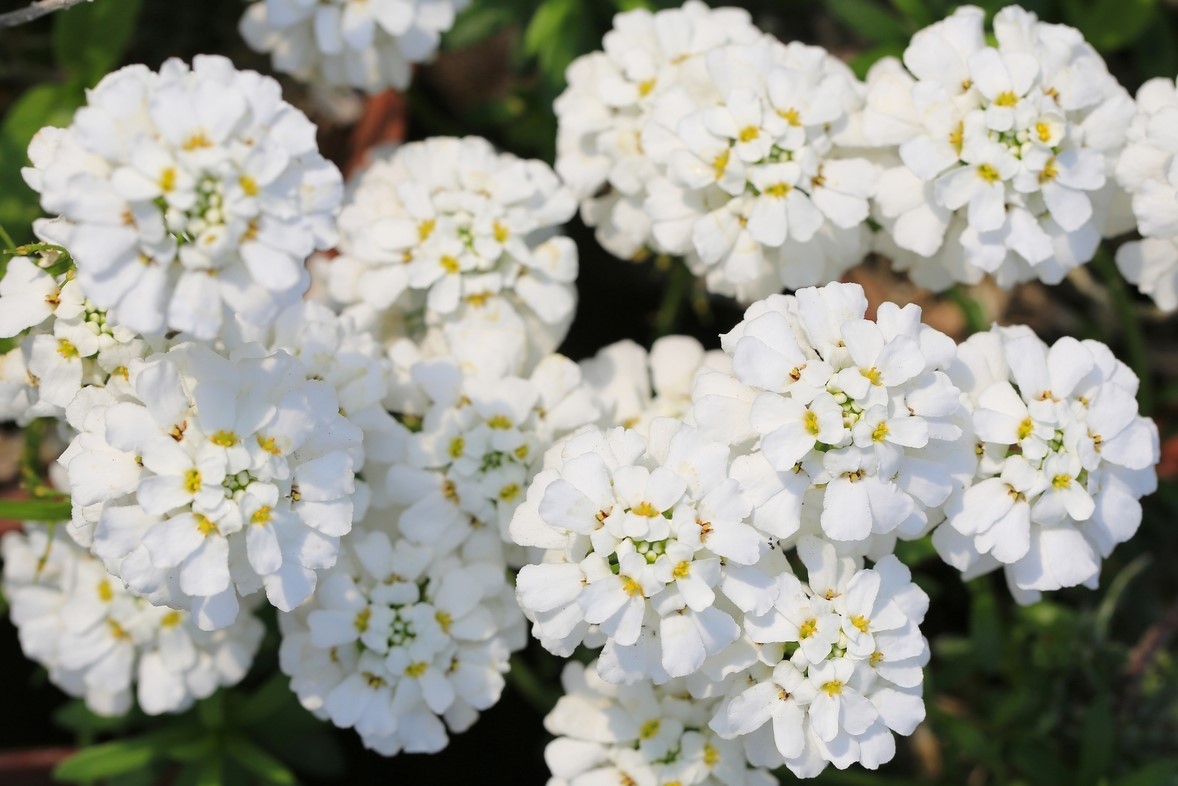
Candytufts are known and beloved for their charming appearance, characterized by low-growing, mounding foliage and clusters of small flowers that create a soft and elegant ground cover. The flowers are typically small and densely packed, forming clusters that can range from flat to domed. While the most common color of candytuft flowers is white, some varieties produce blooms in shades of pink, lavender, or even deep purple. The individual flowers show off a delicate four-petaled form and emit a subtle fragrance that is sure to impress both pollinators and the neighbors!
The foliage of candytufts is equally as attractive as the flowers, with leaves that are usually dark green and lance-shaped. The leaves are evergreen in mild climates, meaning they retain their color and texture throughout the year even if flowers are not blooming. This is why candytuft is often used as ground cover, as their foliage can offer a lush, green backdrop that enhances other garden plants. Most varieties reach a height of only about 6 to 12 inches with a spreading form that makes candytufts ideal for use in and near borders, rock gardens, and even pathways.
Common Types Of Candytufts
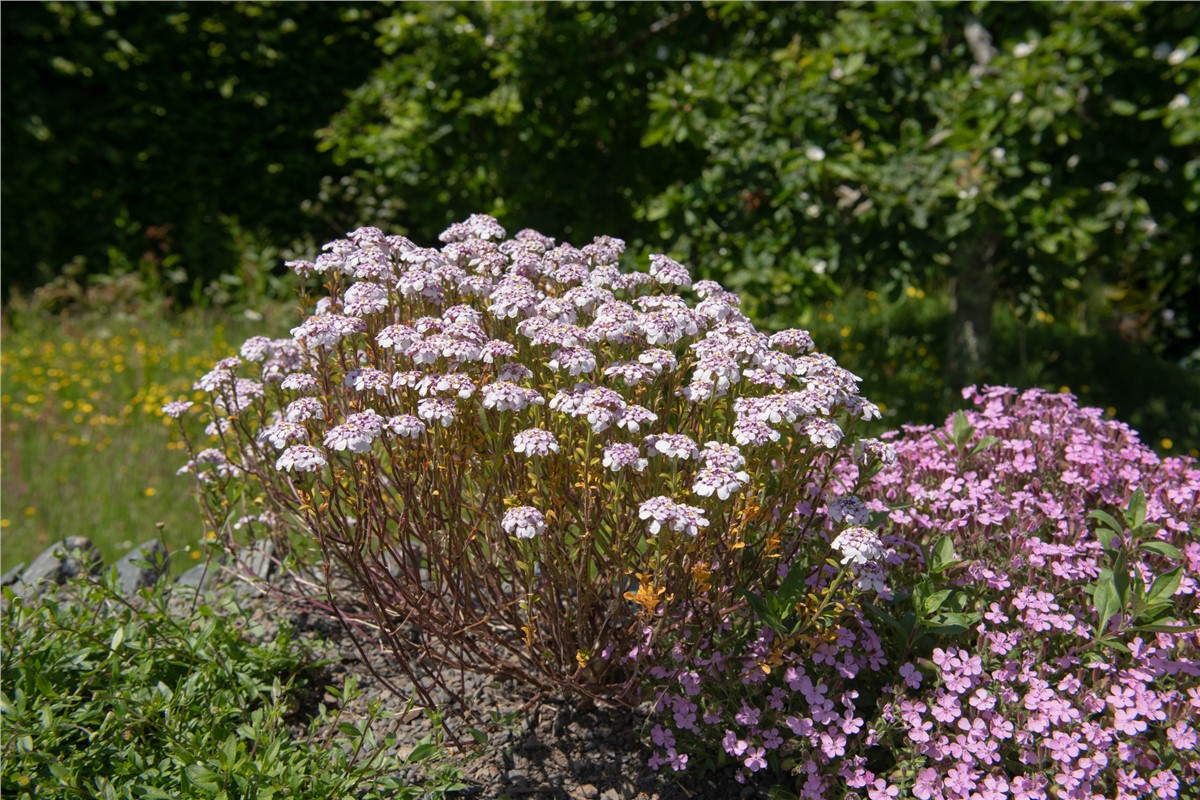
There are several types of candytufts available, each bringing its own unique qualities to the garden. It is worth noting that the different varieties of candytufts thrive in different climates and conditions, so knowing which types can tolerate your yard’s particular circumstances is key to ensuring that your flowers bloom and dazzle as they are meant to.
Evergreen Candytuft
- Hardy in USDA zones 3-9.
- Evergreen foliage with dense, glossy, dark green leaves.
- Clusters of pure white flowers bloom in late spring to early summer.
- Height: 8-12 inches; Spread: 12-18 inches.
Masterpiece Candytuft
- Hardy in USDA zones 5-9.
- Larger, more abundant white flowers with a prolonged blooming period.
- Dense, mounded growth with evergreen foliage.
- Height: 10-12 inches; Spread: 12-15 inches.
Tahoe Candytuft
- Hardy in USDA zones 3-9.
- White flowers bloom in spring, often reblooming in cooler climates.
- Compact growth habit, evergreen leaves.
- Height: 6-8 inches; Spread: 12-15 inches.
Pink Ice Candytuft
- Hardy in USDA zones 5-9.
- Soft pink flowers that fade to white; blooms in early spring.
- Evergreen foliage with a mounding habit.
- Height: 8-10 inches; Spread: 12-15 inches.
Snowflake Candytuft
- Hardy in USDA zones 3-9.
- Abundant, white flowers in late spring; known for large flower heads.
- Dense, evergreen foliage, compact and mounding form.
- Height: 8-10 inches; Spread: 12-18 inches.
Life Cycle Of Candytufts
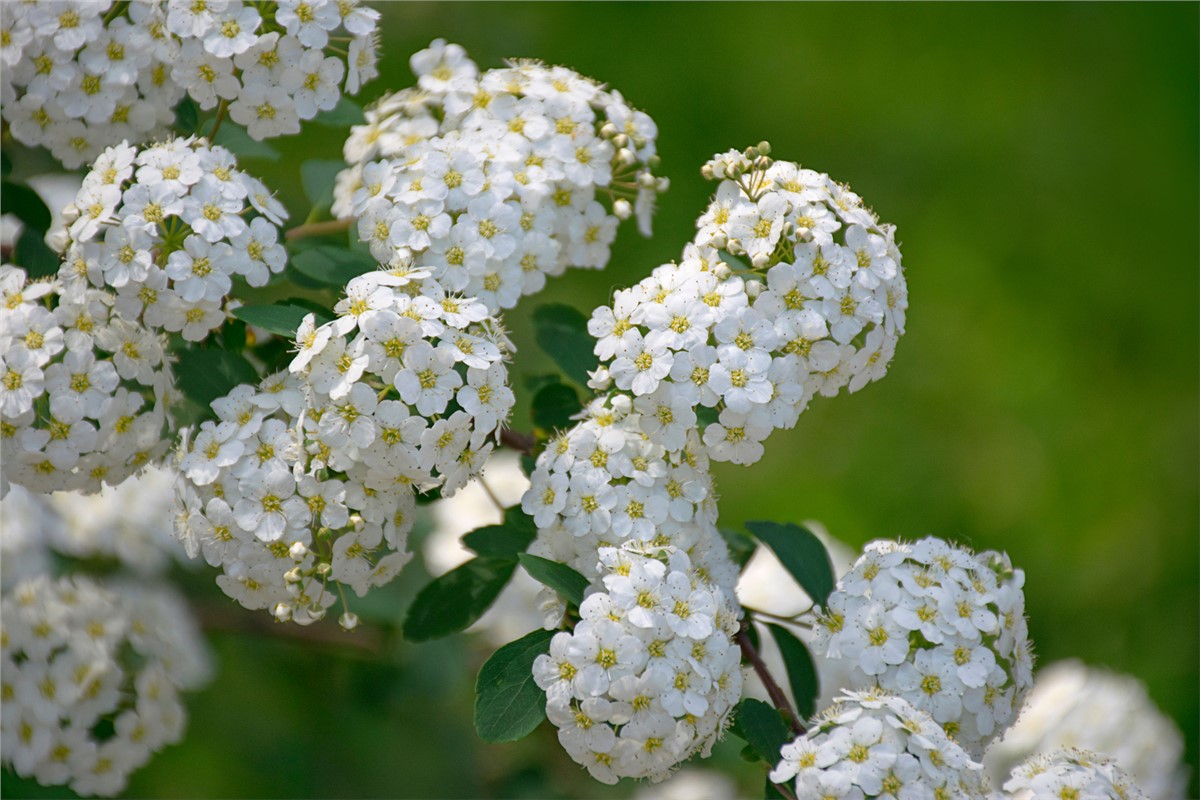
Annual
Annual candytufts, such as Iberis umbellata, complete their life cycle within a single growing season. They are typically sown from seeds in early spring, germinate, grow, bloom, set seed, and die by the end of summer. Because of their relatively short lifespan, annual candytufts need to be planted each year. However, they make up for this with a profusion of colorful blooms that can add vibrant interest to garden beds, borders, and containers. Their ability to grow quickly from seed makes them a favorite among gardeners who want to create a fast, colorful display.
Perennial
In contrast, perennial candytufts, such as Iberis sempervirens and Iberis saxatilis, have a life cycle that extends over several years. These plants generally bloom from late spring into early summer, offering a carpet of flowers that can last several weeks. After the blooming period, the plants focus on producing foliage, which remains attractive throughout the growing season and, in many cases, through winter in milder climates. Perennial candytufts may experience a period of dormancy in colder regions but often retain their evergreen foliage in warmer areas. This longevity makes perennial varieties highly valued in gardens, as they provide continuous ground cover and require less replanting effort compared to annuals. The perennial life cycle also allows for propagation through division, which can rejuvenate older clumps and encourage more vigorous growth.
Optimal Conditions For Candytufts

Candytufts flourish in full sun to partial shade, and they perform best when they receive at least six hours of direct sunlight daily. Full sun encourages abundant flowering and helps maintain a compact, bushy growth habit. In hotter climates, providing some afternoon shade can prevent the foliage from scorching and help retain moisture in the soil.
When it comes to optimal soil, candytufts prefer well-drained conditions. They are highly susceptible to root rot and disease if planted in poorly drained, waterlogged areas. For best results, plant candytufts in neutral to slightly alkaline soil, with a pH range of 6.0 to 8.0. While they can tolerate various soil types, from sandy to loamy, the key is good drainage.
Watering needs for candytufts are moderate. It is essential to water them regularly, especially during dry spells, but overwatering should be avoided. Established perennial varieties tend to be more drought-tolerant once their root systems are well-developed, requiring less frequent watering. Fertilization is minimal with candytufts, and should always be performed alongside watering. A balanced, slow-release fertilizer applied in early spring is usually sufficient to promote healthy growth and prolific blooming.
How To Care For Candytufts In Your Garden
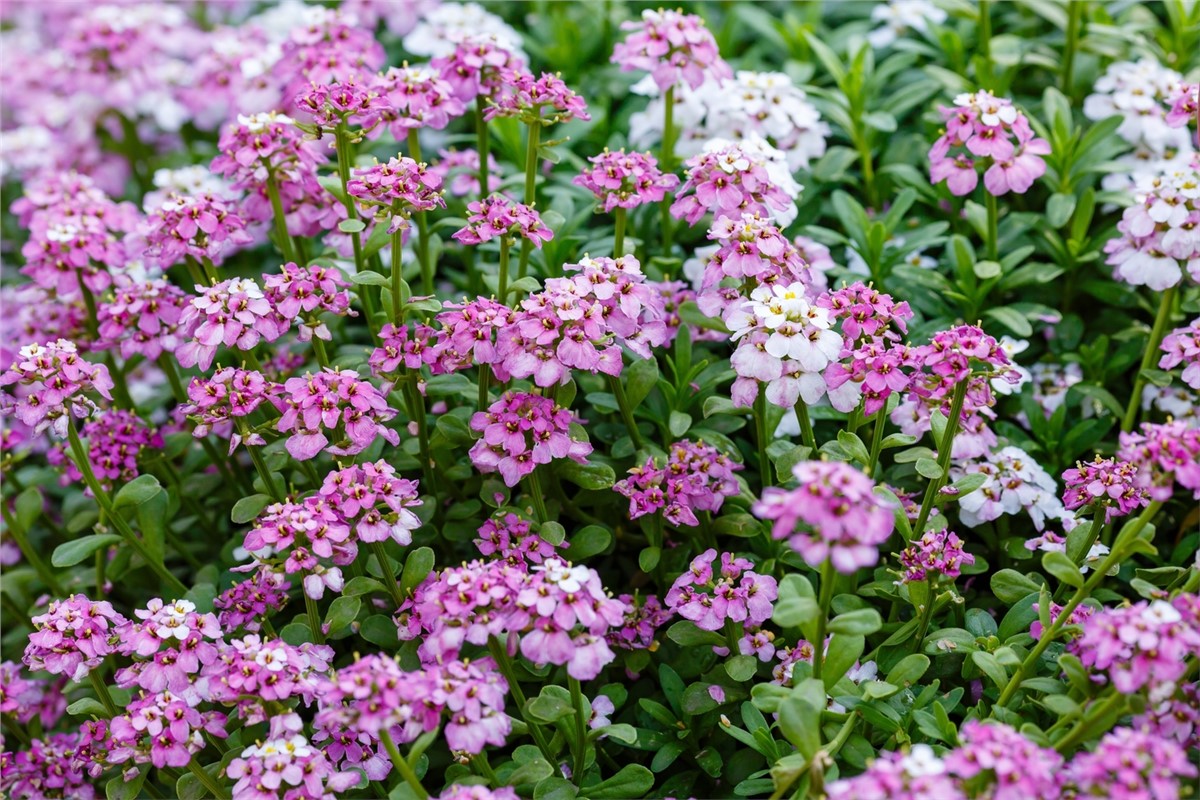
Caring for candytufts involves several key practices to ensure these beautiful plants remain healthy and vibrant throughout the growing season. Following these candytuft care tips will help ensure a lush, healthy display of blooms and leaves. If you want to maximize your landscape’s potential, please check out Simple Lawn’s landscaping services for the Vancouver, WA area after reading!
- Planting Time: Plant candytufts in early spring, after the last frost date, when the soil has warmed up. This ensures they establish strong roots quickly in well-draining soil.
- Spacing Requirements: When planting perennial varieties like Iberis sempervirens, space plants 12-24 inches apart.
- Watering Needs: Candytufts prefer moderate watering. Water newly planted candytufts regularly until established, then reduce watering to prevent soggy soil, which can lead to root rot.
- Pruning: After the main flowering period in late spring, trim candytufts back by one-third to maintain their compact shape. Deadhead spent blooms promptly to encourage a second flush of flowers.
- Mulching Benefits: Apply a 2-3 inch layer of organic mulch, such as bark chips or compost, around the base of candytufts. This helps retain moisture, keeps roots cool in summer, and prevents weeds from competing for nutrients.
- Propagation Tips: Propagate candytufts by dividing established clumps every 3-4 years to maintain vigor and prevent overcrowding. Alternatively, take softwood cuttings in late spring or early summer, rooting them in a well-drained mix to create new plants.
Subscribe to Simple Lawns's Blog



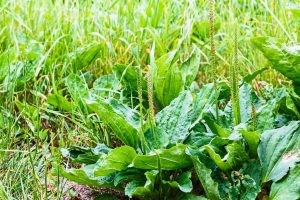

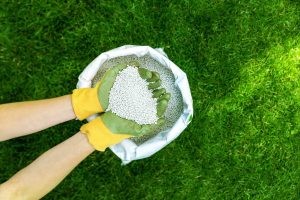



Comments